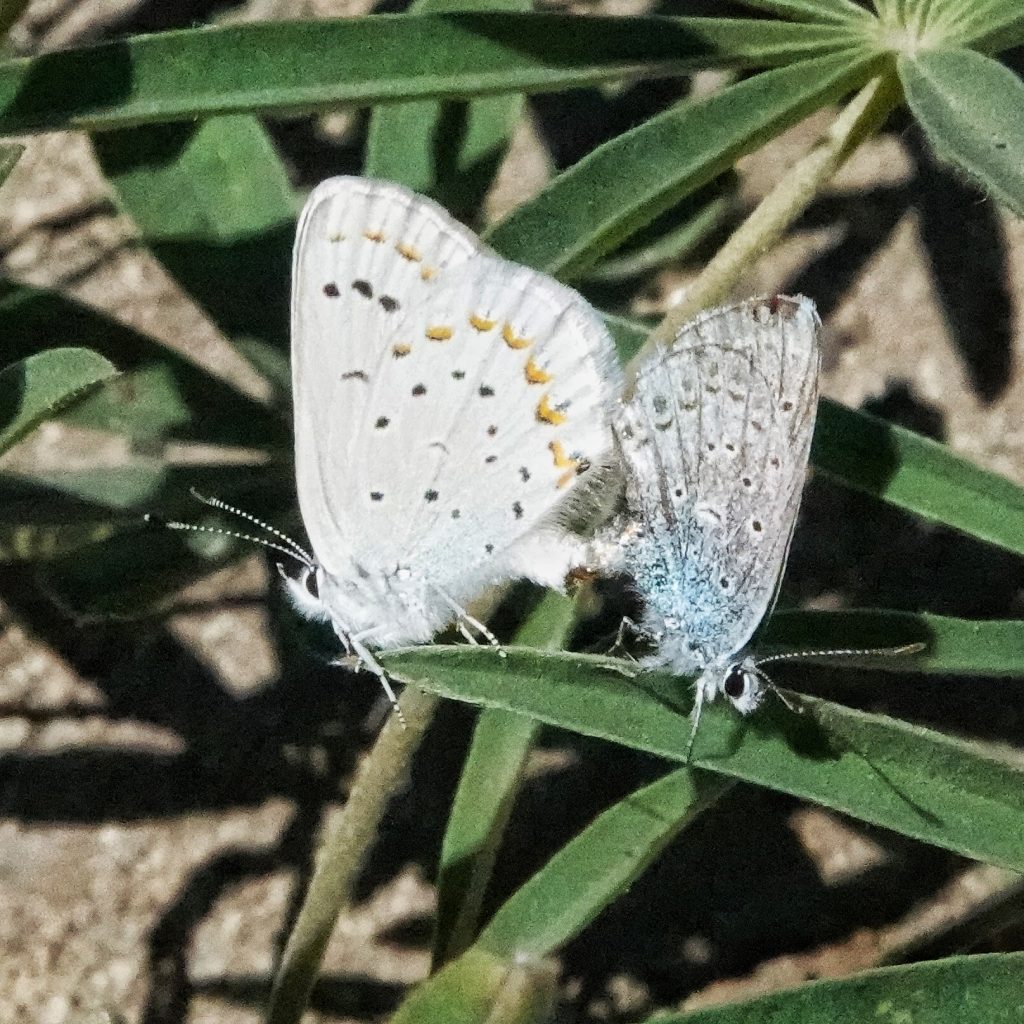
This was the second most common butterfly I found on the flanks of Mt. Adams, right behind the Phyciodes pulchella (Field Crescent). Unfortunately I had the same problem with them being fast and flighty, and the vast majority of photos I took are either a bad angle, or are too blurry after cropping to be identifiable. However I did get lucky with a mating pair that were too preoccupied with procreating to pay me any heed, and were doing so on a lupine, the likely host plant. I also didn’t trust my identification and so captured a specimen to take home, and I got two decent photos of it before it escaped my clutches, and presumably left the house entirely through a torn screen, since I never saw it again.
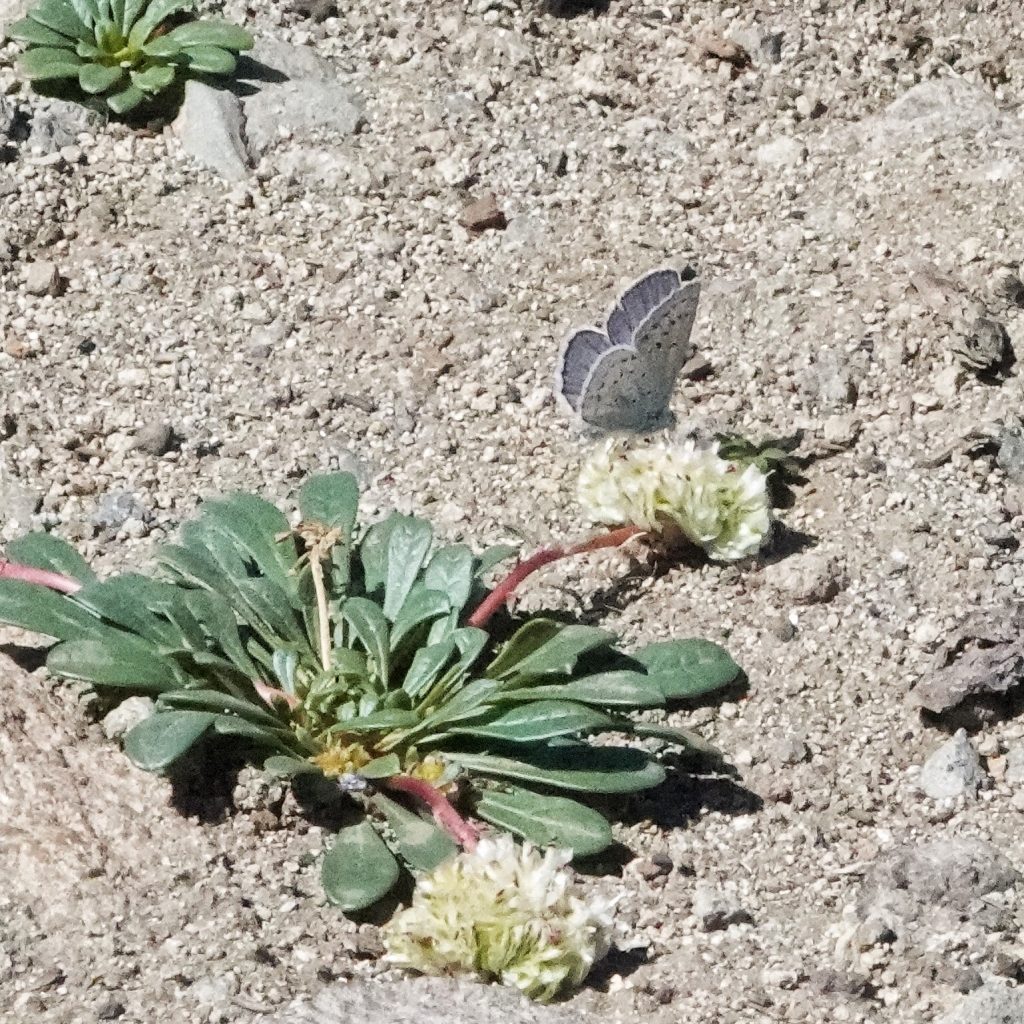
Description-Small (wingspan less than 1.25”) butterfly; males violaceous blue with a black border above, and no orange on the dorsal or ventral side; females brown dorsally, with variable amounts of blue near the wing base, orange crescents near the margin on both dorsal and ventral surfaces, and has turquoise scintillae near the margin of the ventral side of the wings; ventral spotting is variable, but usually weak to non-existent.
Similar species-Melissa’s blue has brighter orange on dorsal wings of females, stronger spotting below, and flies at lower elevations; other similar blues have males with orange crescents on the ventral hindwing.
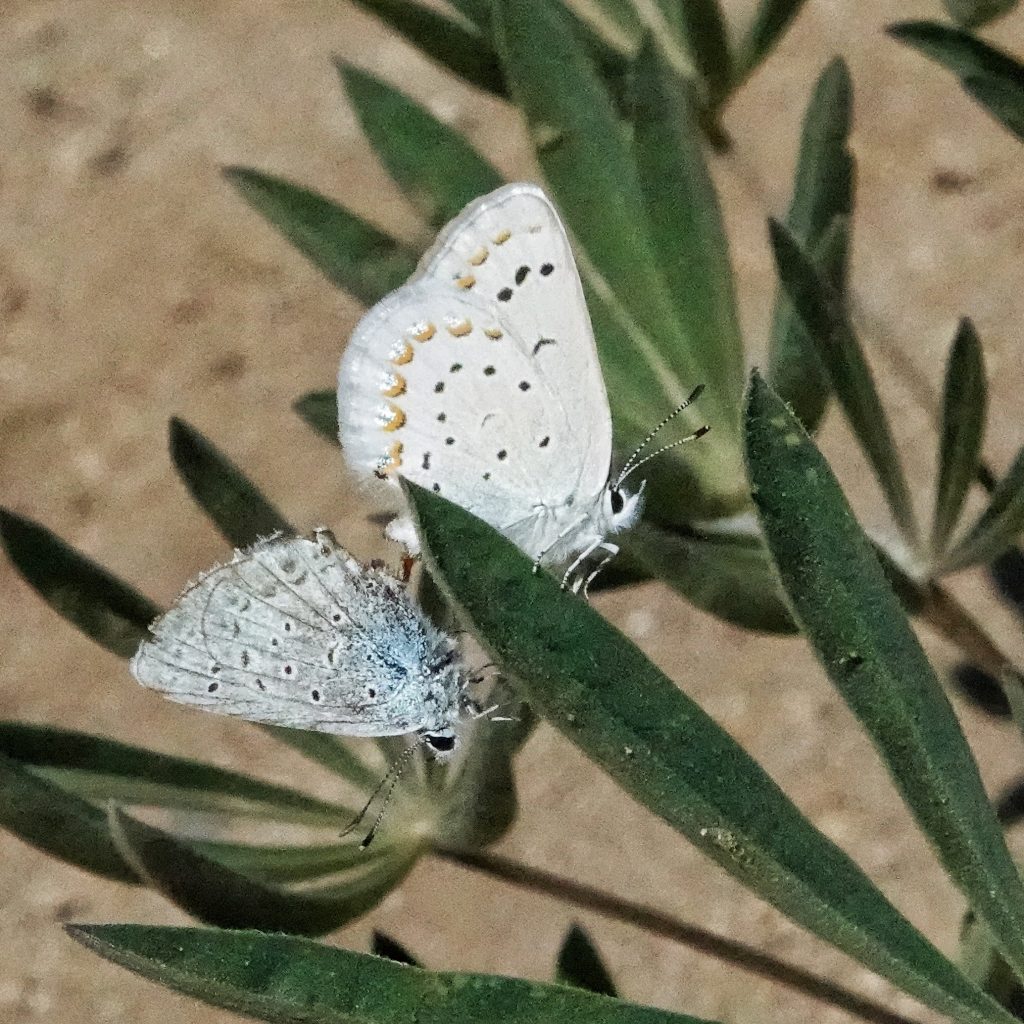
Habitat– “Moist, cool montane meadows, roadsides and trail sides, forest openings, subalpine ridges and arctic-alpine turf, from around 3,000 feet up to rock and ice” Pyle/LaBar, “Butterflies of the Pacific Northwest”; 2018
Range– “Cascades and California Sierras south from southern British Columbia and west to coast, in boreal and mountain habitats.” Species Plebejus anna – Anna’s Blue – Hodges#4374.1 – BugGuide.Net; found only in the Cascades, Coast Range, Siskiyous, Warners, and Olympics in the PNW.
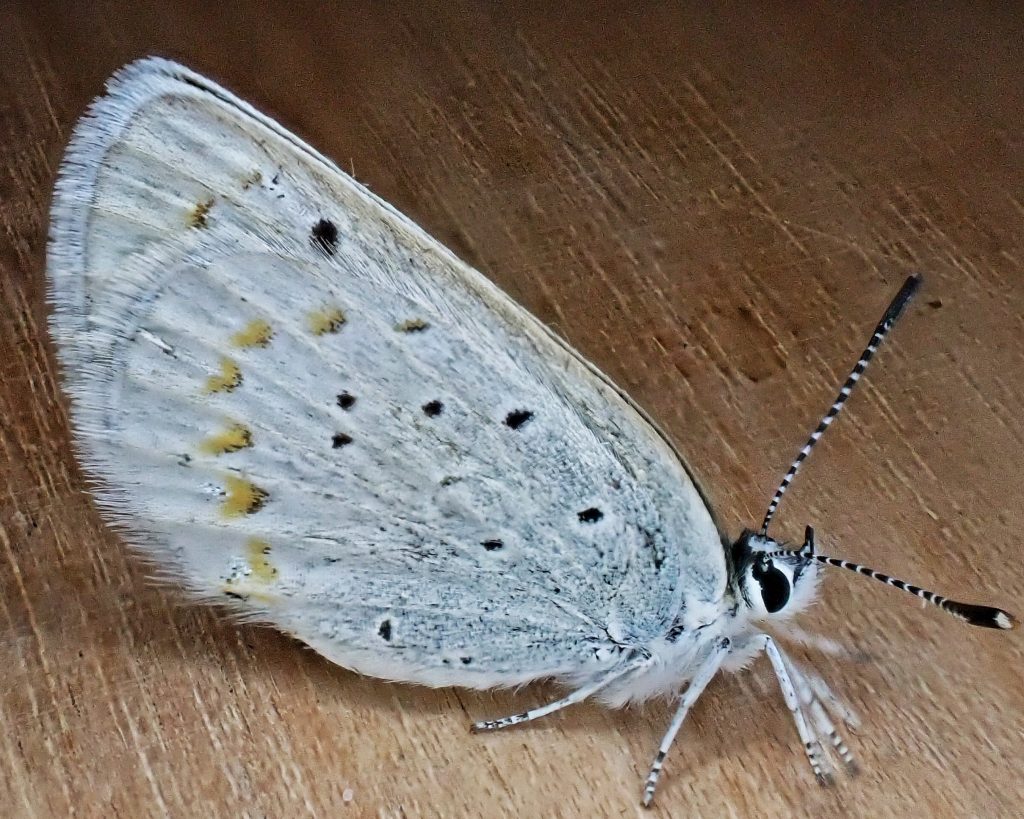
Eats– Larvae feed on members of Fabaceae, including Lupinus, Vicia, Lathyrus, Astralagus, Lotus, and Trifolium; adults nectar on a variety of flowers, including the larval hosts.
Eaten by– Presumably a host for parasitoids in Hymenoptera and Diptera, and probably preyed upon by insectivores of all classes, but I can find nothing specific for this species.
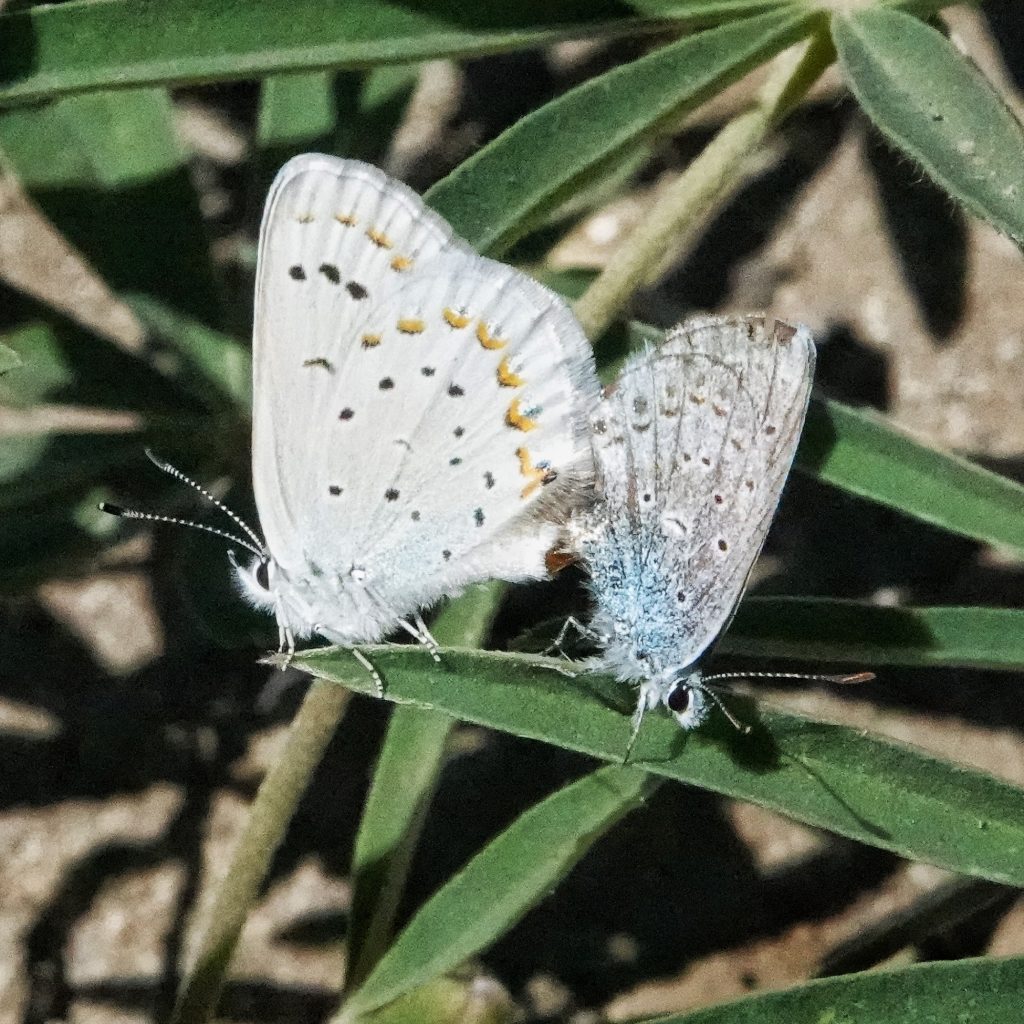
Adults active– Early June to mid October, with a peak in July
Life cycle– Univoltine; overwinters as an egg.
Etymology of names– Plebejus is from the Latin word for ‘common/plebeian’ and comes from the phalange in which Linnaeus placed the skippers and blues, the smaller and more ‘common’ butterflies. The specific epithet anna is one of several feminine first names that Edwards gave to butterflies, but, like the others, to whom it pays homage is unknown.
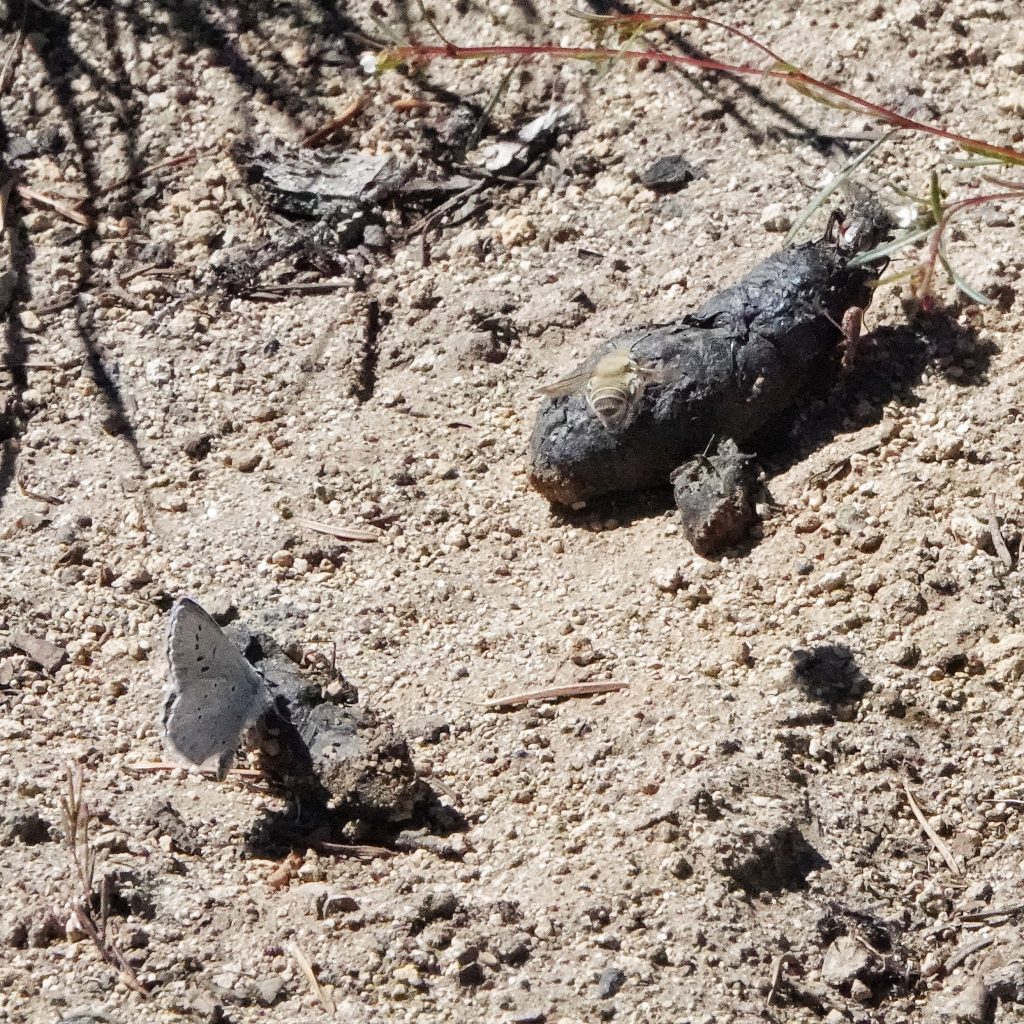
Species Plebejus anna – Anna’s Blue – Hodges#4374.1 – BugGuide.Net
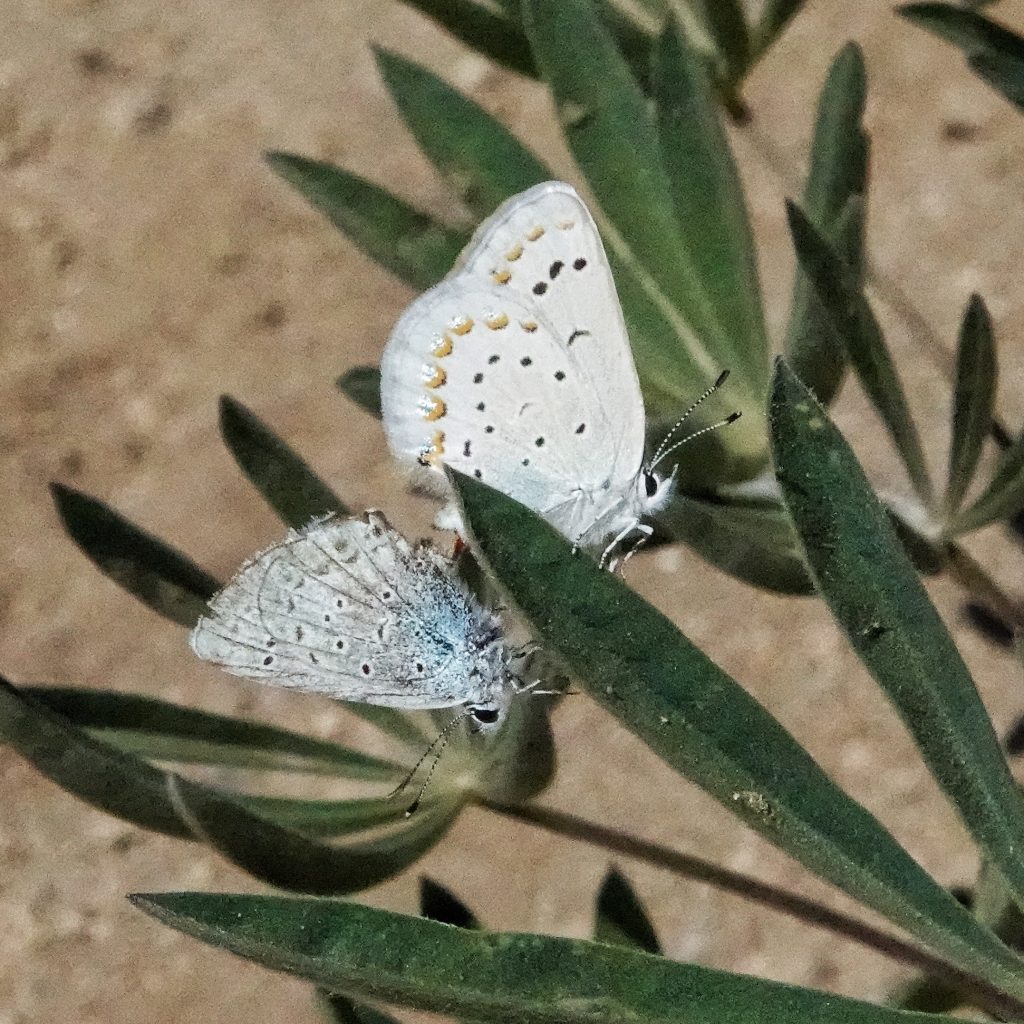
So happy that a friend shared your email with me. In the spring, my students learn about butterflies and I will share what I learn from your letters with them.
Thanks for your appreciation, Kimberly! I hope these profiles are very useful to you.
I’ve never noticed the frilly edges of a moth or butterfly the way I did in the photo with the wood-grain background. Is this unique to the blues or a common trait of moths and/or butterflies?
It’s pretty common, Kat, especially as they age, because the margins fray. But many leps have frilly edges even when fresh.
I’m not sure why I haven’t paid more attention to it. I very carefully observe the wings of my honeybees for various signs of disease, age, and overall health.
Why not leps, too? Sometimes I wonder about my brain.